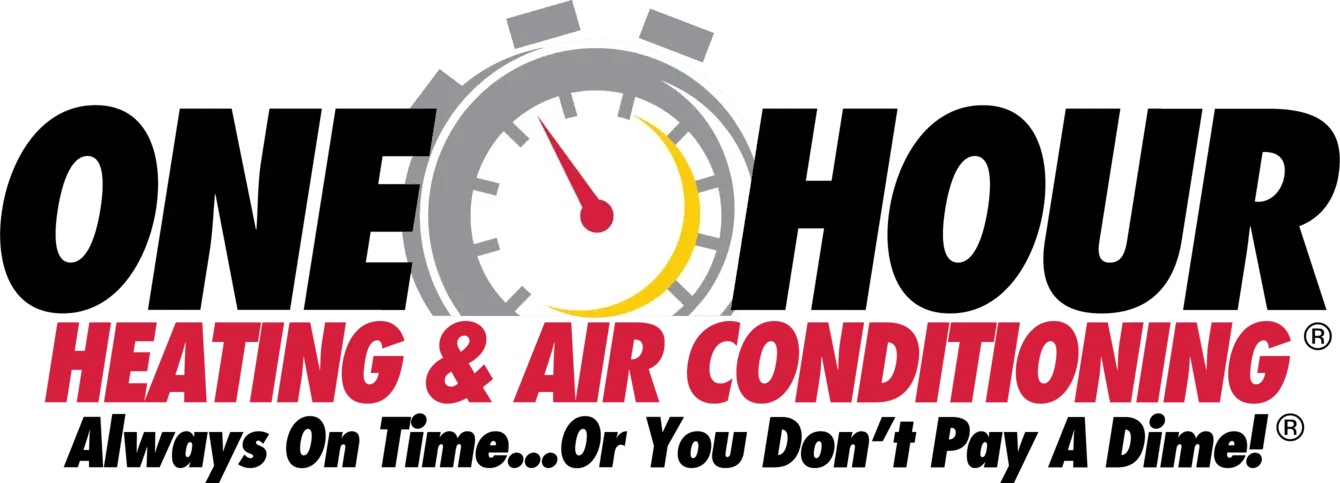How to improve AC performance without replacing your system
Your air conditioner doesn't need to be replaced to work better and cost less to run. Simple maintenance tasks and smart adjustments can boost your AC's performance by up to 15% while cutting energy bills significantly. Most homeowners can make these improvements themselves without calling repair services.
Hot summer months put stress on cooling systems, but basic steps like changing filters and adjusting settings make a big difference. Clean filters alone can improve airflow and efficiency within minutes. These small changes add up to better comfort and lower monthly costs.
Regular upkeep and smart usage habits extend equipment life while keeping indoor temperatures comfortable. The following tips focus on practical solutions that work for most home cooling systems.
In this article, you’ll learn how to improve AC performance through simple maintenance and optimization strategies—without needing to replace your system.
Through the topics below, you’ll learn how to cut energy costs, boost efficiency, and extend your AC’s lifespan.
- Why improving AC performance matters
- AC maintenance tips to boost efficiency
- Smart ways to boost AC efficiency
- Extending AC lifespan without replacement
Keep reading! Understanding why performance matters helps homeowners take the right steps to maintain their systems.
Why improving AC performance matters
Better cooling without replacement saves money and creates a more comfortable home while making your system last longer.
The link between AC efficiency and energy bills
According to ENERGY STAR, changing or cleaning a clogged air filter can prevent airflow blockages that force your AC to work harder and raise energy consumption by 5‑15 %.
An inefficient AC system uses more electricity to cool your home. This shows up directly in higher monthly energy bills.
When air filters get dirty, the system works harder to push air through. A clogged filter can increase energy use by 5-15%.
Poor insulation makes your AC run longer cycles. Air leaks around windows and doors force the system to work overtime.
Dirty coils reduce heat transfer ability. This means the compressor runs longer to reach the same temperature.
|
Problem |
Energy Impact |
|
Dirty filters |
5-15% increase |
|
Poor insulation |
10-30% increase |
|
Dirty coils |
20-40% increase |
Regular maintenance keeps energy costs down. Simple fixes like changing filters monthly can cut cooling costs significantly.
How better cooling affects comfort at home
Poor AC performance creates uneven temperatures throughout the house. Some rooms feel too hot while others stay comfortable.
Blocked vents cause airflow problems. This leads to hot spots in certain areas of your home.
Humidity control suffers when your AC struggles. High humidity makes you feel hotter even at lower temperatures.
A well-maintained system provides:
- Even temperature distribution
- Better humidity control
- Consistent airflow
- Quieter operation
Proper airflow helps every room reach the set temperature. This eliminates the need to constantly adjust the thermostat.
Clean filters improve air quality too. They remove dust and allergens more effectively when not clogged.
Extending AC lifespan through simple upkeep
Regular maintenance prevents small problems from becoming major repairs. This keeps your system running for many more years.
Dirty components make the motor work harder. This extra strain shortens the life of expensive parts like compressors.
Simple tasks add years to your AC:
- Change filters every 1-3 months
- Clean outdoor coils annually
- Check refrigerant levels
- Lubricate moving parts
A typical AC system lasts 15-20 years with proper care. Poor maintenance can cut this lifespan in half.
Replacing a compressor costs $1,500-$2,500. Regular upkeep helps avoid these expensive repairs.
Clean systems run smoother and quieter. They also maintain better cooling capacity as they age.
Ac maintenance tips to boost efficiency
Regular maintenance keeps air conditioning systems running at peak performance and prevents costly breakdowns. Simple tasks like filter changes, coil cleaning, and duct inspections can improve efficiency by up to 15%.
Changing air filters regularly
Air filters trap dust, dirt, and debris that can block airflow through the system. Dirty filters force the AC to work harder and use more energy.
Standard filters need replacement every 1-3 months. High-efficiency filters may last 3-6 months. Check the filter monthly to see how dirty it looks.
Signs you need a new filter:
- Filter looks gray or brown
- Dust visible on filter surface
- Reduced airflow from vents
- Higher energy bills
Homeowners should locate their filter first. Most filters sit in the return air vent or near the indoor unit. Turn off the AC before removing the old filter.
Write down the filter size from the old filter's edge. Buy the same size replacement at any hardware store. Slide the new filter in with arrows pointing toward the unit.
Cleaning coils and outdoor units
The indoor evaporator coil and outdoor condenser coil collect dirt over time. Dirty coils cannot transfer heat properly, which reduces cooling power.
Indoor coil cleaning requires turning off power at the breaker. Remove the access panel near the indoor unit. Use a soft brush to gently clean visible dirt from coil fins.
Outdoor unit maintenance starts with clearing debris. Remove leaves, grass, and branches within 2 feet of the unit. Trim bushes back at least 18 inches from all sides.
Spray the outdoor coil with a garden hose from inside the unit outward. This pushes dirt through the coil instead of deeper into it. Avoid using high pressure that could bend the thin metal fins.
Monthly outdoor unit tasks:
- Clear debris from around unit
- Check for bent fins
- Remove grass clippings from coil
- Ensure proper airflow space
Checking ductwork for leaks and blockages
ENERGY STAR notes that sealing and insulating ductwork can improve HVAC efficiency by up to 20 %.
Leaky ducts waste up to 30% of cooled air before it reaches living spaces. Air escapes through gaps, holes, and loose connections in the ductwork.
Common leak locations:
- Joints where ducts connect
- Around duct boots at vents
- Flexible duct connections
- Ductwork in attics or crawl spaces
Feel around accessible ducts for air blowing out. Look for gaps, holes, or disconnected sections. Small leaks can be sealed with metal tape or mastic sealant.
Blockage signs include weak airflow from certain vents or rooms that stay warmer than others. Check that all vents are open and unblocked by furniture or curtains.
Remove vent covers and look inside for debris buildup. Use a flashlight to check the first few feet of ductwork. Professional duct cleaning may be needed for major blockages or extensive leak repairs.
Smart ways to boost AC efficiency
Simple upgrades to thermostats, airflow systems, and home insulation can significantly reduce energy costs while keeping homes comfortable. These changes work with existing AC systems to maximize cooling power.
Using programmable thermostats
Programmable thermostats help homeowners control cooling costs by setting different temperatures for different times of day. These devices automatically adjust the temperature when people are away from home or sleeping.
Smart thermostats offer even better control. They learn daily routines and adjust cooling schedules automatically. Many models can be controlled from smartphones, allowing temperature changes from anywhere.
Setting the thermostat 7-10 degrees higher when away from home can save up to 10% on cooling bills. The ideal home temperature during summer is 78°F when people are home.
Programming tips:
- Set higher temperatures during work hours
- Lower temperatures 30 minutes before arriving home
- Use sleep mode to raise temperatures at night
- Avoid frequent manual adjustments
Optimizing airflow with ceiling fans
Ceiling fans create a wind chill effect that makes rooms feel 4-6 degrees cooler than the actual temperature. This allows homeowners to raise thermostat settings while maintaining comfort.
Fans should rotate counterclockwise during summer months. This pushes air downward and creates the cooling breeze effect on skin.
Running ceiling fans costs much less than air conditioning. A typical ceiling fan uses only 75 watts of electricity compared to 3,500 watts for central air conditioning.
Best practices for fan use:
- Turn fans off when leaving rooms
- Clean fan blades monthly for better airflow
- Use fans in occupied rooms only
- Combine with raised thermostat settings
Sealing windows and improving insulation
Air leaks around windows and doors force AC systems to work harder. Sealing these gaps prevents cool air from escaping and hot air from entering.
Weatherstripping around windows and doors blocks air leaks effectively. Foam strips, felt, and rubber seals are common options that homeowners can install themselves.
Caulking fills smaller cracks around window frames. Clear or white caulk works best for most applications and remains flexible over time.
Window treatments also improve efficiency. Thermal curtains and cellular shades add insulation layers that block heat transfer.
Attic insulation keeps hot air from heating up the home's interior. Adding insulation or upgrading existing insulation reduces the cooling load on AC systems significantly.
Extending AC lifespan without replacement
Regular professional maintenance and early problem detection can add years to an air conditioning system's life. These proactive steps help homeowners avoid costly replacements while maintaining reliable cooling performance.
Scheduling annual professional tune-ups
Professional technicians perform detailed inspections that catch problems before they cause system failures. They clean internal components, check electrical connections, and test system performance.
Annual tune-ups include cleaning the evaporator and condenser coils. Dirty coils force the system to work harder and use more energy. Clean coils help the AC run smoothly.
Technicians also inspect the blower motor and fan belts. They lubricate moving parts and tighten loose connections. These small fixes prevent bigger problems later.
Key tune-up services:
- Coil cleaning and inspection
- Electrical connection testing
- Refrigerant pressure checks
- Thermostat calibration
- Ductwork inspection
Most HVAC companies offer maintenance plans. These plans cost less than emergency repairs. They also help systems last 10-15 years instead of failing early.
Monitoring refrigerant levels and performance
Low refrigerant levels damage the compressor and reduce cooling power. Systems with proper refrigerant levels run more efficiently and last longer.
Signs of low refrigerant include warm air from vents and ice buildup on coils. The outdoor unit may make unusual noises or struggle to start.
Homeowners should watch for these warning signs:
- Reduced cooling power - rooms take longer to cool down
- Higher energy bills - system works harder with low refrigerant
- Ice formation - frozen coils indicate refrigerant problems
- Hissing sounds - may signal refrigerant leaks
Only licensed technicians should add refrigerant. They also find and fix leaks that cause low levels. Regular refrigerant checks prevent compressor damage that costs thousands to repair.
Preventing small issues from becoming major repairs
Small problems become expensive failures when ignored. Quick fixes save money and extend system life.
Homeowners should replace air filters every 1-3 months. Dirty filters restrict airflow and strain the system. This simple task prevents many repair calls.
Common small issues to address quickly:
|
Problem |
Quick fix |
What happens if ignored |
|
Dirty filters |
Replace monthly |
Frozen coils, motor failure |
|
Blocked vents |
Remove obstructions |
Uneven cooling, system strain |
|
Thermostat issues |
Replace batteries |
Poor temperature control |
|
Strange noises |
Schedule inspection |
Component failure |
Strange sounds like grinding or squealing need immediate attention. These noises often mean worn parts that are easy to replace early.
Checking the outdoor unit monthly helps spot problems. Clear away leaves, grass, and debris that block airflow. Bent fins should be straightened by professionals.
Conclusion
Your AC system can work better without a full replacement. These simple steps make a real difference in how well your unit cools your home.
Clean filters are the easiest fix. They cost just a few dollars but boost airflow right away.
Regular maintenance keeps your system running smoothly. Check coils, ducts, and vents every few months.
Smart cooling habits help too. Use ceiling fans, close blinds during hot days, and set your thermostat wisely.
Most homeowners see lower energy bills within the first month. The changes also make rooms more comfortable.
Some systems may still need replacement after 15 years. But these tips can add years to your AC's life first.
Key improvements to try:
- Replace dirty air filters
- Clean outdoor coils
- Seal air leaks in ducts
- Use programmable thermostats
- Add insulation where needed
These fixes work for most AC units. They cost much less than buying new equipment.
Your system will cool faster and use less energy. That means more comfort and money saved each month.
Start with the easiest tasks first. Even small changes help your AC perform better right away.
Schedule a professional AC tune-up today to boost system performance, lower energy bills, and extend your unit’s lifespan.
Frequently Asked Questions
How can I improve AC performance without replacing the unit?
You can improve AC performance by regularly changing air filters, cleaning coils, sealing duct leaks, and using programmable thermostats to optimize cooling schedules.
How often should I change my AC filter?
Most filters should be changed every 1 to 3 months. Homes with pets or allergy sufferers may require more frequent replacement to maintain airflow and efficiency.
Does cleaning the outdoor unit really help with cooling?
Yes. Cleaning the outdoor condenser unit improves heat transfer, reduces strain on the system, and increases overall cooling efficiency.
Will sealing my ductwork improve efficiency?
Absolutely. Sealing leaky ducts can improve HVAC efficiency by up to 20%, according to ENERGY STAR, by preventing cooled air from escaping into unconditioned spaces.















